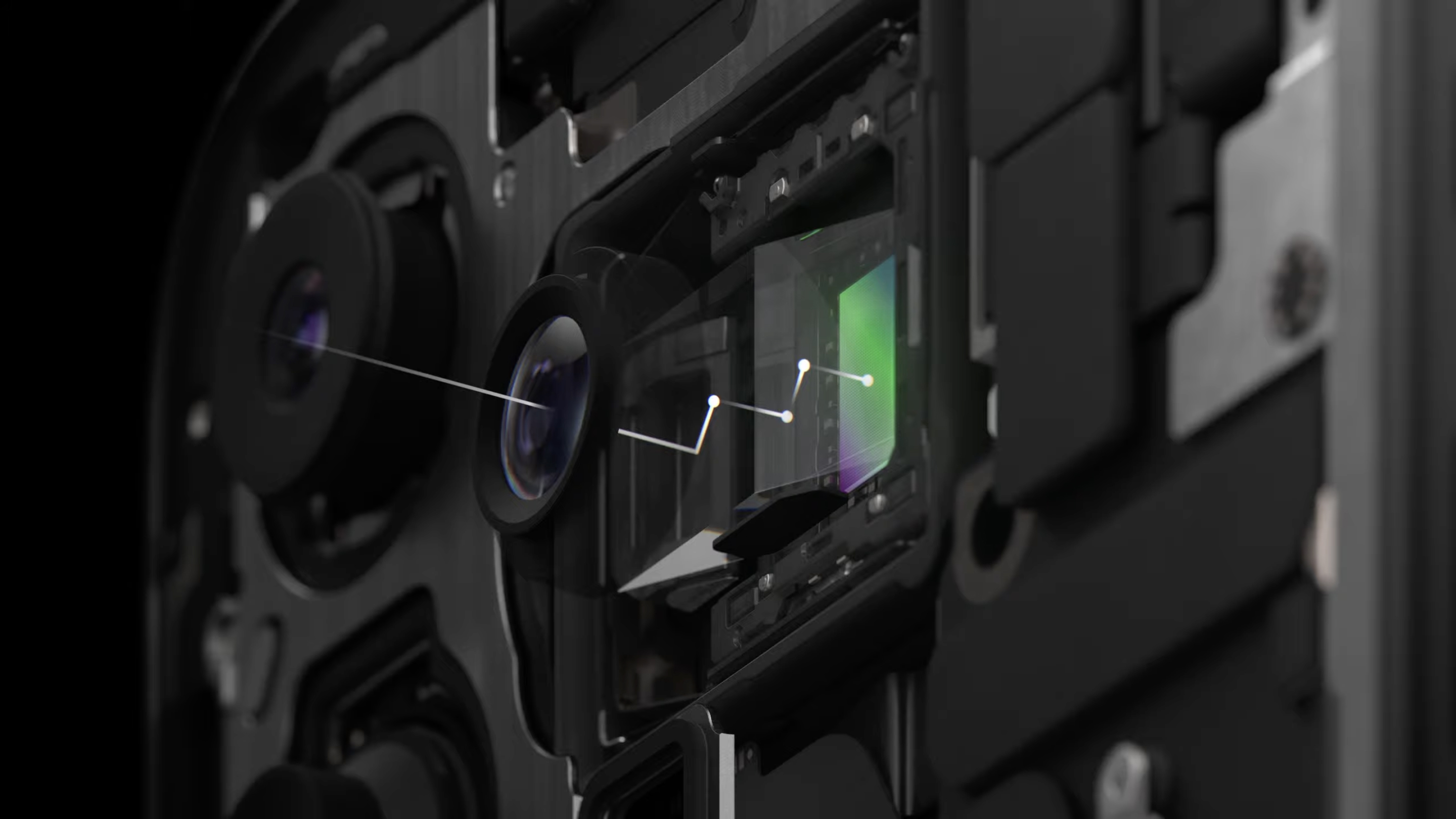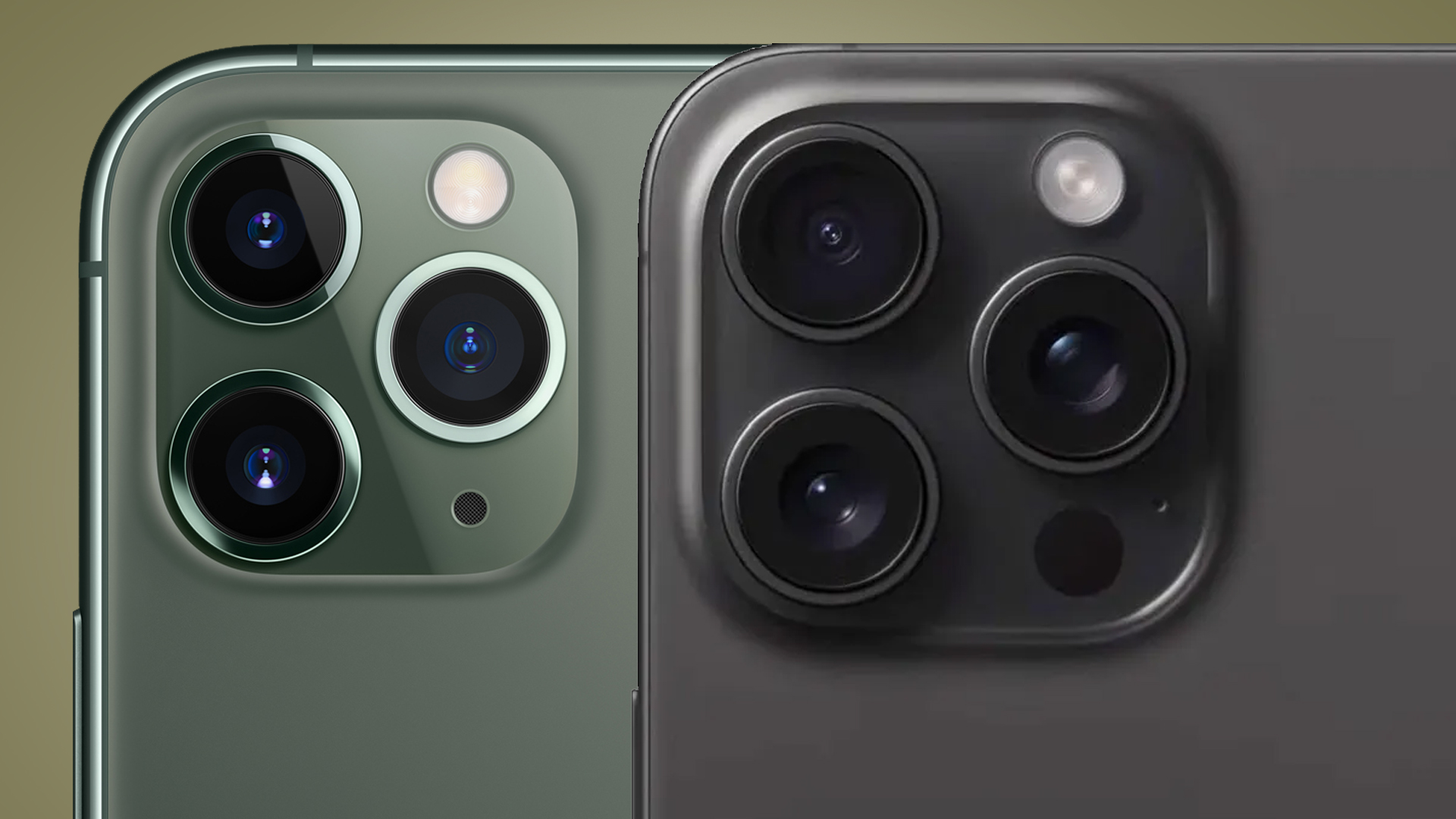I'm a photographer and will be skipping the iPhone 15 Pro Max – here's why
Opinion: It seems wise to follow my golden Apple rule

The iPhone 15 Pro Max is the most powerful camera Apple has ever made – yes, even trumping 1994's long-forgotten Apple QuickTake and its 0.3MP sensor. So, considering I'm TechRadar's former cameras editor and am rocking an iPhone 11 Pro, you'd think it'd be a no-brainer upgrade – but that isn't the case.
It isn't the 15 Pro Max's high price tag; $1,199 / £1,399 / AU$2,099 is a lot of money, but I spent more on my Fujifilm X-T5 without any lenses. It also isn't because the Pro Max currently isn't shipping until at least November. After a lifetime on iOS, going all the way back to the iPhone 3GS, I'm also not ready to jump ship to Android either.

No, my main reason for waiting until at least the iPhone 16 is a golden Apple rule I've successfully followed for a long time – for any new Apple product or hardware feature, always wait for its second generation.
That proved wise with the original iPhone, MacBook Air and Apple Watch. And based on the evidence so far, that's what I'll be doing again with what is arguably the iPhone's biggest camera hardware change since my iPhone 11 Pro delivered Apple's first ultra-wide lens – the 15 Pro Max's new 5x optical zoom.
Perfectly cooked
One of the few times I didn't follow my golden Apple rule was with the iPhone 11 Pro. It has Apple's first ultra-wide camera and it's pretty average. That ultra-wide camera has a tiny sensor, a slow f/2.4 aperture, and a fixed-focus lens. The photos it produces have tons of distortion around the edges. I only use it in emergencies.
Those issues were improved massively in subsequent generations, particularly the iPhone 13 Pro. This is what Apple generally does with new iPhone camera features, and I'm expecting the iPhone 15 Pro Max's 5x optical zoom to be no different. Yes, it's no surprise to see iPhone features improve over time – but I think it particularly pays to skip major first-gen features.
Perhaps I should really wait until the iPhone 17 to guarantee a polished telephoto experience, but ultra-wides are notoriously tricky to perfect – so it's understandable that it took two generations to fine-tune.
Sign up for breaking news, reviews, opinion, top tech deals, and more.

It's possible Apple has nailed its 5x optical zoom out of the gate. We'll find out for sure in our iPhone 15 Pro Max review. I'm looking forward to trying it out, as I regularly shoot in the middle range of my XF50-140mm lens (equivalent to 76-213mm on full-frame). But Apple didn't become the world's most valuable company by releasing a long-awaited smartphone innovation in one go. Even if the refinements in the iPhone 16 and 16 Pro Max are mostly software-based, it feels like the smart move to wait for that second-gen telephoto experience.
On the plus side, the sensor behind the iPhone 15 Pro Max's telephoto camera is apparently 25% bigger than the one in the iPhone 14 Pro. That will be a big bonus considering the camera's 'tetraprism' design means light rays are reflected four times through its glass structure. But it's also a 12MP sensor with an understandably slow f/2.8 aperture. And that small sensor, which has a 1.12µm pixel pitch, will be a significant handbrake on image quality.
Timing is important
Of course, the iPhone 15 Pro Max would still represent a giant leap over my 11 Pro. Even compared to last year's 14 Pro Max, you get a bigger main camera sensor, a bunch of new focal length options (albeit cropped from that wide camera), the ability to shoot 48MP HEIF or JPEG files, speedy USB-3 file transfers and tons of Photonic engine processing upgrades.
But my other reason for waiting one more year to upgrade is that I prefer a smaller smartphone form factor. And there are growing rumors suggesting that, while the 5x optical zoom is exclusive to the 6.7in Pro Max this year, that will likely change with the iPhone 16 Pro series.

According to Apple analyst Ming-Chi Kuo, the iPhone 16 Pro will arrive brandishing the iPhone 15 Pro Max's telephoto camera when it lands in September 2024. And this rumor was reiterated again this week by the leaker Digital Chat Station on the Chinese microblogging site Weibo.
The downside? It sounds like the only way Apple is going to squeeze that 'tetraprism' camera into the iPhone 16 Pro is by slightly increasing that phone's display and overall body size. According to display analyst Ross Young, the 16 Pro will be a 6.3in phone. I'd take that – having more phone to grip onto when you're trying to steady a telephoto lens is never a bad thing.
The sweet spot
Of course, there's never a perfect time to buy an iPhone. But if you only upgrade intermittently like me, the timing of your upgrade makes a big difference. And I'll likely get my next iPhone when it has a refined 5x optical zoom camera, rather than when Apple potentially gets tempted to match the 10x zoom of the Samsung Galaxy S23 Ultra.
Having a 230mm lens in your pocket may sound impressive on paper, but it isn't a hugely usable focal length for everyday shooting. When I go out with my Fujifilm X-T5, I usually take a wide-angle lens, a 35mm or 56mm prime and my 50-140mm at most. Some of the best zoom lenses you can buy, like the Nikon Z 24-120mm f/4 S, also tend to be in that less ambitious focal range. That's why the Google Pixel 8 Pro, due to land next month, is also sticking with its 5x telephoto camera.

Another downside of the iPhone 15 Pro Max's camera setup – and this may well carry over to the iPhone 16 Pro – is the huge focal range gap between its 24mm main camera and that new 120mm equivalent telephoto. Unfortunately, there's no 3x telephoto on the Max (only the iPhone 15 Pro). That's why Apple was keen to tout its new phone's "seven pro lenses", which promise 28mm, 35mm and 48mm options in between the two.
The downside? They're really just crops from the main camera with a bit of computational photography thrown in. Still, I'm keen to try them out and I like the new ability to set one of them as your default focal length. I just wish the Pro Max had two telephoto options (a 3x and a 5x zoom), alongside its main and ultra-wide cameras.
There's no doubt that the iPhone 15 Pro Max will likely be one of the best camera phones you can buy – maybe even the best, if Apple's nailed its processing recipes and that 5x optical zoom doesn't have teething issues. But while I'm keen to take it for a spin, that will almost certainly be a dry run for the upgrade I'm planning to make next year.
My iPhone 11 Pro is still an excellent pocket camera, arguably one of the best Apple has made (aside from that ultra-wide). You can pick one up for only $330 / £270 / AU$500 on the likes of Backmarket. So while the temptation to upgrade is strong, my experience with Apple is that patience usually pays off.
You might also like

Mark is TechRadar's Senior news editor. Having worked in tech journalism for a ludicrous 17 years, Mark is now attempting to break the world record for the number of camera bags hoarded by one person. He was previously Cameras Editor at both TechRadar and Trusted Reviews, Acting editor on Stuff.tv, as well as Features editor and Reviews editor on Stuff magazine. As a freelancer, he's contributed to titles including The Sunday Times, FourFourTwo and Arena. And in a former life, he also won The Daily Telegraph's Young Sportswriter of the Year. But that was before he discovered the strange joys of getting up at 4am for a photo shoot in London's Square Mile.